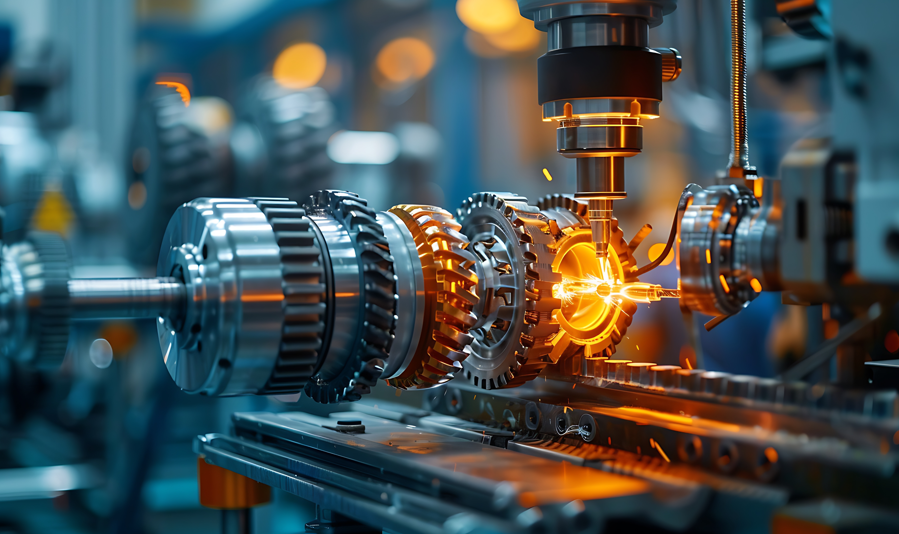
Despite rapid advances in robotics, many systems still face recurring performance issues. Sluggish response, jittery motion, and unexpected breakdowns continue to disrupt operations. These problems often arise not from software but from mechanical weaknesses. One key issue is poor motion control caused by gear inaccuracies.
Manufacturers and engineers face constant challenges with speed, precision, and load management. When robotic joints fail to align or motors overheat, gear faults are often the reason. Inconsistent torque, excessive backlash, and gear wear compromise equipment performance and reliability. These issues lead to costly downtimes, missed production targets, and premature equipment replacement.
Precision gears solve these problems by providing high accuracy, low backlash, and stable performance. These components allow robotic systems to operate smoothly, even under stress. This article explains how precision gears work and why they’re essential to modern automation. You’ll gain insights to help improve your systems with smarter gear choices.
Understanding Precision Gears in Context
Precision gears are high-accuracy components designed for tight control and minimal error. They differ from standard gears by offering smoother rotational or linear motion, lower backlash, and exact fit. These features make them ideal for robotic and automated systems.
Their main role is to convert motion between parts, control speed changes, and transmit torque. They do this while maintaining alignment and reducing energy loss. With minimal backlash, precision gears support steady and repeatable movements.
Robotics systems often use a variety of gear types to meet performance requirements. Planetary gears offer compact size and high torque. Harmonic drives provide zero backlash and high precision. Cycloidal gears handle shock loads well and last longer. Each type suits different applications depending on space, speed, and force needs. A reliable precision gear manufacturer with decades of industry experience should have all these gear designs, allowing you to choose the appropriate one depending on your application.
These gears help robots perform complex tasks accurately and reliably.
Enabling Accurate Motion Control
Precision gears help robotic systems move with greater accuracy and smoother transitions. They allow motors and joints to stay in sync during high-speed tasks with demanding specifications. This control supports complex motion paths without delay or drift.
Low backlash is key to maintaining this stability. It ensures the gear teeth stay engaged without gaps. When backlash is minimal, robotic arms can return to the same point every time. This consistency is vital in automated manufacturing and precision assembly.
In industrial robots, precision gears reduce errors in fast, repetitive operations. In medical robots, they support safe, controlled movements during delicate procedures. For collaborative robots, smooth motion ensures safe interaction with people. Each use case demands motion control without compromise.
These gears make reliable, repeatable movement possible across advanced robotic systems.
Enhancing Load Handling Capabilities
Precision gears help robotic systems handle heavy loads without losing performance. They distribute force evenly across gear teeth, reducing wear and stress. This improves system balance and extends component life.
These gears offer a high load-to-weight ratio, which supports lighter designs with stronger output. With less material, systems can stay compact without sacrificing strength. This benefit allows robots to carry or move heavy items more efficiently.
In manufacturing, precision gears support robotic arms that lift large parts with accuracy. In aerospace, they help guide flight control systems under extreme conditions. In automotive, robots use them to manage parts during assembly and inspection. Each industry relies on reliable load support.
Durability, excellent strength, and balance make precision gears essential in high-load robotic applications.
Supporting Miniaturization and Compact Design
Precision gears enable designers to build smaller, more agile robotic systems. Their compact size supports tight spaces without sacrificing accuracy or strength. This makes them ideal for advanced robotics where space is limited.
Surgical robots rely on miniature gears for steady, accurate motion inside the human body. Micro-assembly bots use them to handle tiny parts in electronics manufacturing. In consumer robotics, compact gears help devices remain lightweight and user-friendly.
Designing small gears brings unique challenges, including limited surface area and tighter tolerances. Engineers overcome this using advanced materials, efficient machining solutions, and better lubrication. These solutions reduce friction, boost life span, and maintain performance in small packages.
Miniaturized precision gears allow complex functions to fit inside compact robotic devices.
Reducing Energy Consumption and Wear
Precision gears use efficient tooth profiles and tight tolerances to reduce friction. Proper gear meshing minimizes power loss during motion transfer. This results in smoother operation and less wasted energy.
Lower friction means less heat is generated during gear operation. Reduced heat helps prevent premature wear on components. This extends gear life and keeps robotic systems running longer without failure.
Efficient gears also lower the demand on motors and drives. This decreases energy use across the system, reducing overall operating costs. With less stress on moving parts, systems need fewer repairs and replacements.
Over time, these benefits lead to cost savings through lower maintenance and fewer downtimes. Precision gears offer both performance and long-term value in automation.
Enabling High-Speed, High-Accuracy Commercial Applications
Some precision gears, like harmonic drives, support fast, accurate robotic movements. Their design eliminates backlash and maintains consistent torque output. This helps robots perform rapid tasks without losing control or position.
Pick-and-place robots use these gears to move quickly between targets. CNC automation depends on precise gear timing for smooth tool paths. In electronics manufacturing, robotic arms rely on accurate motion for assembling delicate parts.
Conclusion
When robotic performance drops, the problem often traces back to mechanical components. Even with strong software and sensors, poor gear alignment can cause delays, errors, and breakdowns. Precision gears offer the stability and control needed for advanced systems to run at their best.
It's essential to review your current gear setup against your system goals. Speed, load capacity, and motion control all depend on the right gear selection. A mismatch can reduce output, raise costs, and shorten industrial machinery life. Checking for wear, backlash, and efficiency can reveal hidden issues.







